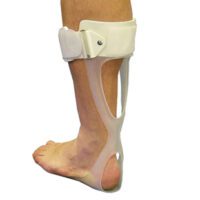How Do You Know If Your Ankle Is Sprained?
Sprained Ankle: Causes, Symptoms, and Treatment
A sprained ankle is a common injury that can happen to anyone, whether you’re an athlete or just taking a walk. This page will guide you through the basics of ankle sprains, including causes, symptoms, and treatment options. For more detailed information, explore the linked articles on our website.

What is a Sprained Ankle?
A sprained ankle usually occurs when there is a single, clear event, such as a sudden twist or roll of the ankle. This often happens when the foot turns inward, causing a “lower” ankle sprain which affects the ligaments supporting the ankle and foot. A “high” ankle sprain, on the other hand, involves the ligaments between the ankle and shin bones.
Symptoms of a Sprained Ankle
Common symptoms of a sprained ankle include:
- Swelling around the outside of the ankle.
- Bruising in the affected area.
- A popping sensation at the time of injury.
- Pain, especially when walking.
- Limited ankle movement and difficulty balancing.
Related Article:
Ankle Sprain – Learn about the causes, symptoms, and treatment options for an ankle sprain.
Rochedale - Call 38410277
Book Online: RochedaleSalisbury - Call 32751044
Book Online: SalisburySandgate - Call 32691122
Book Online: SandgateFAQ
1. How can I tell if I have a sprained ankle?
- A sprained ankle often results in immediate pain, swelling, and sometimes bruising. You might also feel a popping sensation.
2. What should I do immediately after spraining my ankle?
- Apply the RICE method: Rest, Ice, Compression, and Elevation.
3. How long does it take to recover from a sprained ankle?
- Recovery can vary from a few days for mild sprains to several weeks for severe cases. Physiotherapy can aid in faster recovery.
4. When should I see a doctor or physio for a sprained ankle?
- Seek medical attention if you experience severe pain, cannot walk, or if the swelling does not improve with initial treatment.
- Your physiotherapist will commence immediate treatment and guide your early return to function.
5. Can a sprained ankle lead to long-term problems?
- If not properly treated, a sprained ankle can lead to chronic pain or instability. Follow recommended treatments and consult a physiotherapist if needed.
6. What are some common causes of ankle sprains?
- Common causes include sports activities, walking on uneven surfaces, or wearing inappropriate footwear.
Related Articles
- Ankle Sprain – In-depth guide on ankle sprains, including treatment options.
- Swollen Ankle – Explains common causes and treatments for a swollen ankle.
- Ankle Pain – Discusses different causes of ankle pain and how to address them.
- RICE Method – Details on the RICE method for managing injuries.
- Physiotherapy for Ankle Sprains – Information on how physiotherapy can aid in recovery.
- Preventing Ankle Sprains – Tips on how to prevent ankle sprains.
- Sports Injuries – Common sports injuries and how to manage them.
- Balance Exercises – Exercises to improve balance and prevent falls.




































































